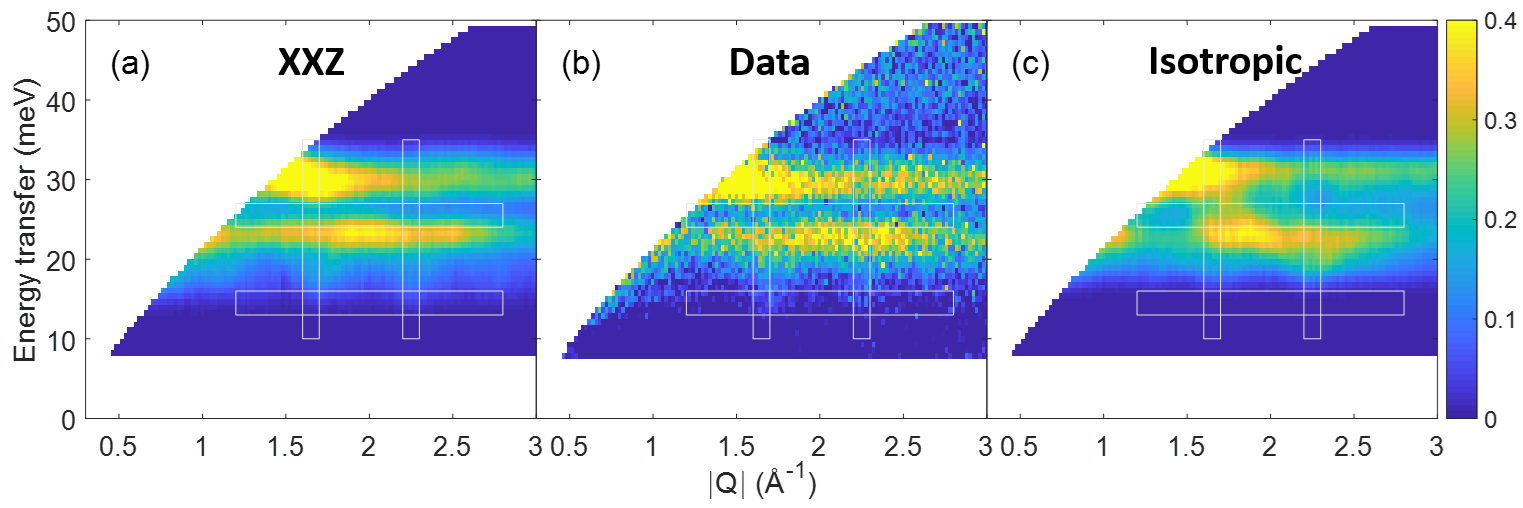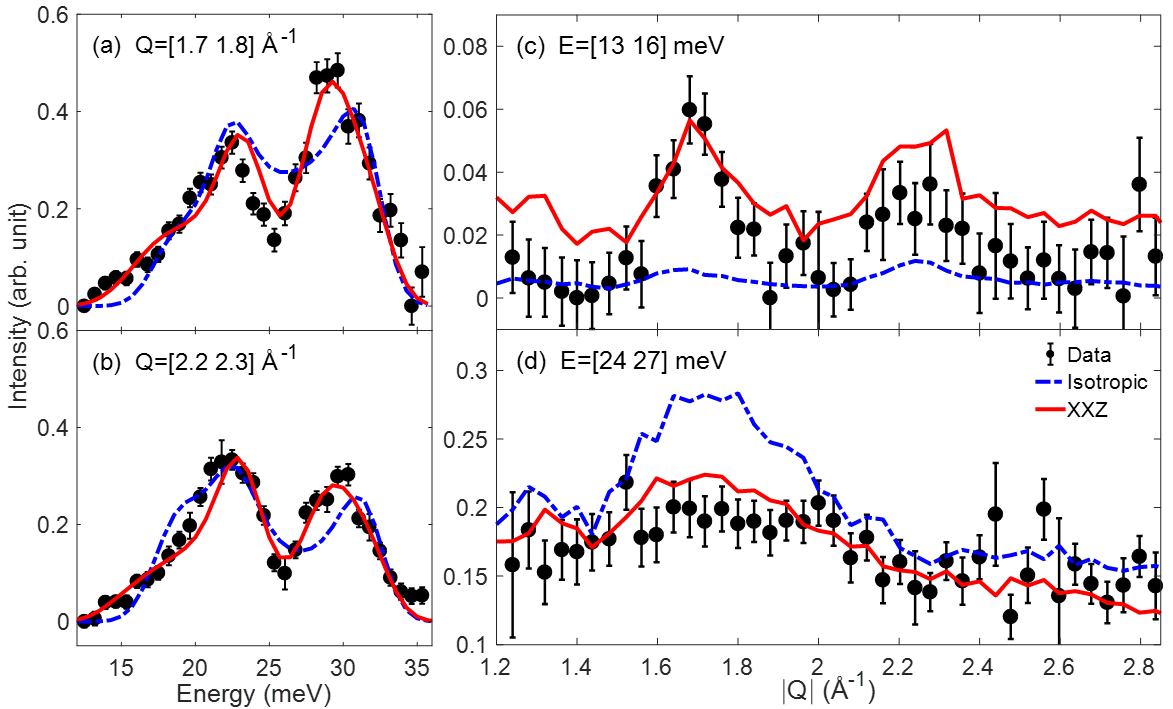J-PARCにおいて物質構造科学研究所が保有する中性子科学実験装置を用いて行うプロジェクト研究型課題(S1型課題)及び装置調整課題の審査が、2020年12月24日に開催された中性子共同利用実験審査委員会において行われた。S1型課題では課題ごとに審査委員会委員を主査として予備審査(研究会)を事前に行い、主査による評価をもとに審査が行われた。S1型課題は、新規申請1課題が採択され、7課題の継続が了承された。また、装置調整課題1課題が採択された。審査結果は今月開催される物質構造科学研究所運営会議で審議される。
J-PARC物質・生命科学実験施設(MLF)では、12月1に利用運転を開始した。
◆ 研究成果
Spin waves in the two-dimensional honeycomb lattice XXZ-type van der Waals antiferromagnet CoPS3
The recent introduction of magnetic van der Waals materials has opened new and novel opportunities to examine the low-dimensional magnetism in real materials. In particular, TMPS3 (TM = Mn, Fe, Co, Ni) family has attracted special interests in the community as a class of antiferromagnetic 2D vdW materials. Since magnetic structure and exchange interactions in TMPS3 depend on the TM elements, they provide an excellent playground to validate spin dynamics theory in low dimensions experimentally.
Among them, CoPS3 has been less studied due to the difficulty in synthesizing high-purity samples [1]. Therefore, the magnetic Hamiltonian of CoPS3 has been unknown so far and needs investigation. Moreover, a Co2+ magnetic system has recently drawn significant attention because Co compounds may, in principle, have Kitaev interactions [2]. A spin-orbital entangled state is an essential ingredient to realize the Kitaev interactions, which can be verified by measuring spin excitations. Typically, a spin-orbit exciton with energy near 30 meV exists for Co2+ compounds with strong spin-orbit coupling [3].
We have examined such a possibility using inelastic neutron scattering at the time-of-flight spectrometer of HRC at J-PARC. In stark contrast with initial expectations, our measurements show that CoPS3 does not show the spin-orbit exciton expected near 30 meV. This data can only be interpreted so that the ground state of CoPS3 is an S = 3/2 state, not the spin-orbital entangled Jeff = 1/2 state. The measured spin-wave spectrum also shows two magnon branches over 40 meV with a massive 13 meV spin gap. This magnon was well-fitted using an anisotropic Heisenberg (XXZ) model with a reasonable anisotropy coefficient α≡Jz/Jx=0.6. Our experiment and theoretical analysis suggest CoPS3 as another exciting platform to study anisotropic XXZ-type spin Hamiltonian in the honeycomb antiferromagnet. Moreover, it provides an excellent playground for future investigation of low-dimensional magnetism with magnetic van der Waals materials. This work has been published in Physical Review B [4]. The neutron-scattering experiment was performed at HRC, J-PARC, under the user proposal program (2019S01).
[1] A. R. Wildes et al., J. Phys.: Condens. Matter 29, 455801 (2017).
[2] H. Liu et al., Phys. Rev. B 97, 014407 (2018).
[3] K. Tomiyasu et al., Phys. Rev. B 84, 054405 (2011).
[4] Chaebin Kim, Jaehong Jeong, Pyeongjae Park, Takatsugu Masuda, Shinichiro Asai, Shinichi Itoh, Heung-Sik Kim, Andrew Wildes, and Je-Geun Park, Phys. Rev. B 102, 184429 (2020).

FIG.1. (a) The best-fit magnon spectra with the XXZ model. (b) The experimental INS data of CoPS3 measured at T =8 K with Ei=71.3 meV. (c) The best fit magnon spectra with the isotropic Heisenberg model. An instrumental energy resolution of 3 meV was used to convolute the theoretical results shown in (a) and (c). Horizontal and vertical white boxes denote the integration range for the constant-E and constant-Q cuts in FIG. 1, respectively.

FIG.2. (a,b) Constant-Q cut at the momentum range of Q =[1.7 1.8] and Q =[2.2 2.3] Å-1 for the measured data with the best fit simulations. (c,d) Constant-E cut with the energy range of E =[13 16] and E =[24 27] meV. The XXZ model (solid red line) agrees better with the data.
◆ 論文等
◆ 論文等
◆ 論文等
◆ 論文等